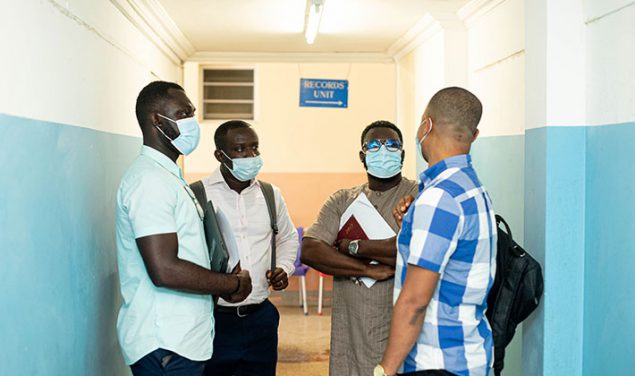What CDC is Doing About Global Typhoid Fever
Updated April 1, 2022
CDC works with partners and countries around the world to document their typhoid fever burden and risk and prevent typhoid through vaccine introduction and implementation.
CDC Helps Document the Magnitude of the Problem By:

An assessment team working to collect data on cases of typhoid fever in discussion at Korle Teaching Hospital in Ghana, 2021. Credit: TyVAC/©PATH/Mensah
- Participating in multi-partner collaborative projects to assess typhoid fever deaths, disease, and costs. For example, the Surveillance for Enteric Fever (typhoid fever and paratyphoid fever) in Asia Project (SEAP), a multi-country population-based surveillance study, characterized enteric fever burden and costs in South Asia. See scientific publications on global typhoid to read more from the SEAP project.
- Supporting interventions to help countries review and mitigate their typhoid fever risks. For example, the Burden and Risk Assessment of Typhoid (BRAT) framework and tool helps countries use available data to systematically assess their typhoid fever burden and risk-factors to inform public health action.
- Supporting regions to document current typhoid fever surveillance practices and vaccine recommendations
CDC Supports TCV Introduction and Rollout Activities By:
- Supporting pilot typhoid conjugate vaccine (TCV) introductions to assess vaccine safety and effectiveness, campaign costs, and lessons learned. For example, the Navi Mumbai TCV introduction pilot was the first to show that a TCV campaign could be successfully completed in a high population setting without disrupting routine immunization services at a low cost.
- Supporting countries to gather and review their typhoid fever burden and risk data to inform national decision-making bodies about the need to introduce TCVs
- Evaluating the best practices for TCV use in outbreak response